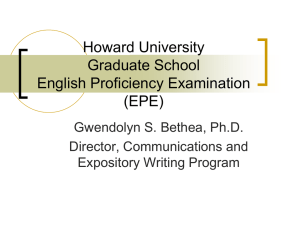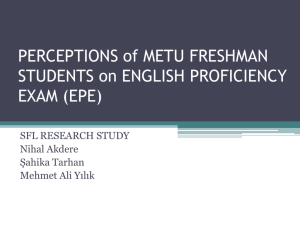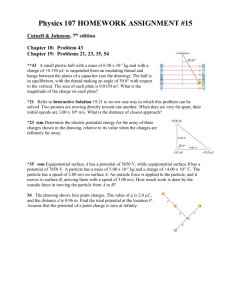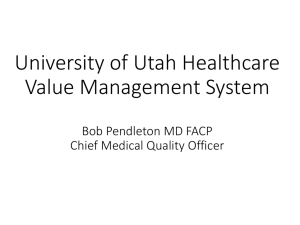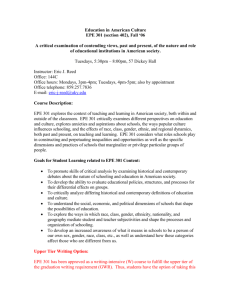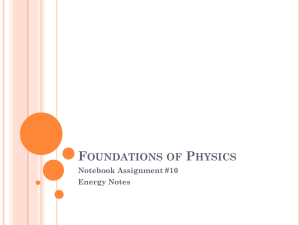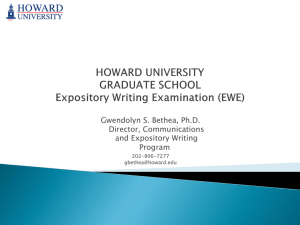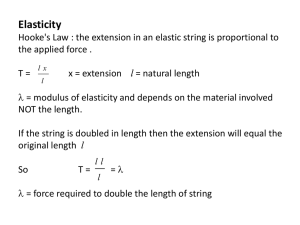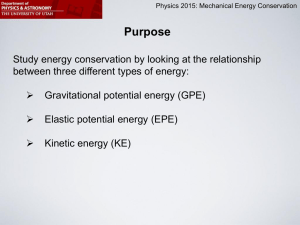qwertyuiopasdfghjklzxcvbnmqwerty
advertisement
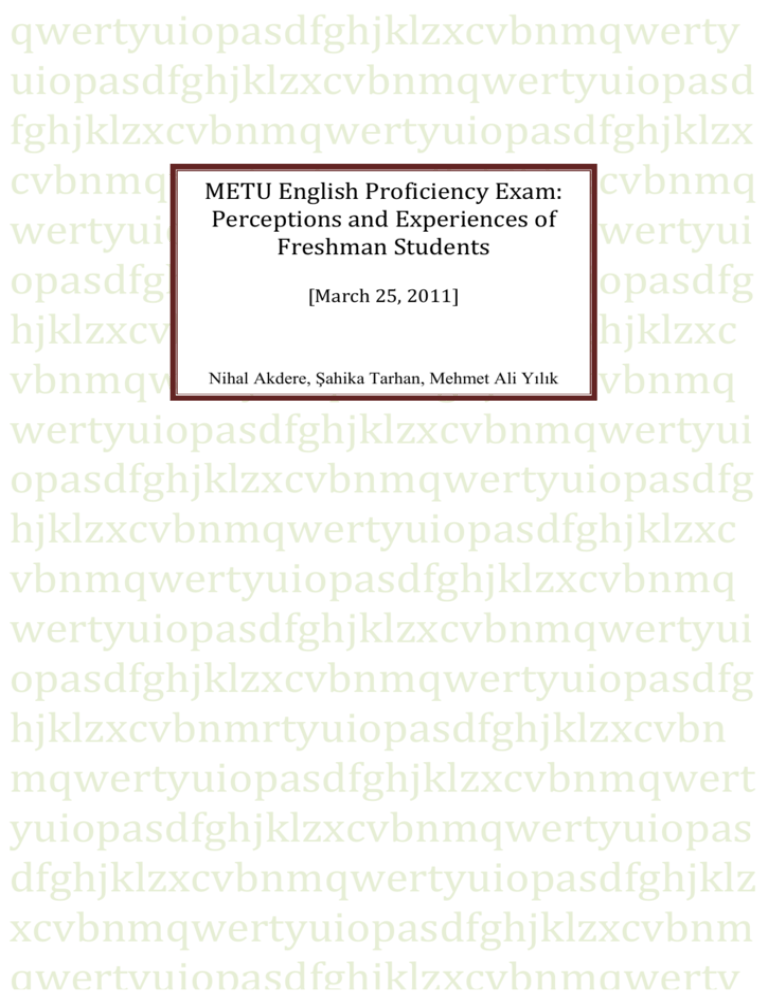
qwertyuiopasdfghjklzxcvbnmqwerty uiopasdfghjklzxcvbnmqwertyuiopasd fghjklzxcvbnmqwertyuiopasdfghjklzx cvbnmqwertyuiopasdfghjklzxcvbnmq METU English Proficiency Exam: Perceptions and Experiences of wertyuiopasdfghjklzxcvbnmqwertyui Freshman Students opasdfghjklzxcvbnmqwertyuiopasdfg [March 25, 2011] hjklzxcvbnmqwertyuiopasdfghjklzxc vbnmqwertyuiopasdfghjklzxcvbnmq wertyuiopasdfghjklzxcvbnmqwertyui opasdfghjklzxcvbnmqwertyuiopasdfg hjklzxcvbnmqwertyuiopasdfghjklzxc vbnmqwertyuiopasdfghjklzxcvbnmq wertyuiopasdfghjklzxcvbnmqwertyui opasdfghjklzxcvbnmqwertyuiopasdfg hjklzxcvbnmrtyuiopasdfghjklzxcvbn mqwertyuiopasdfghjklzxcvbnmqwert yuiopasdfghjklzxcvbnmqwertyuiopas dfghjklzxcvbnmqwertyuiopasdfghjklz xcvbnmqwertyuiopasdfghjklzxcvbnm qwertyuiopasdfghjklzxcvbnmqwerty Nihal Akdere, Şahika Tarhan, Mehmet Ali Yılık 1. PURPOSE OF THE STUDY The aim of this study was to examine student perceptions and experiences regarding various aspects of the Middle East Technical University (METU) English Profiency Exam (EPE). To this end, the study aimed to answer the following research questions: 1) What are the perceptions of freshman students about the English Proficiency Exam (EPE) in terms of a) the difficulty level of the components of EPE; b) the factors underlying their success and/or failure in answering the questions in EPE; c) the time allowed to answer the questions in EPE; d) the length of each component in EPE; and e) their belief in the validity of EPE ? 2) How do students prepare for EPE? 3) Do freshman students experience problems in understanding the English-medium instruction in their departmental courses? 2. METHOD In order to seek answers to the research questions directed, a questionnaire of a predominantly qualitative nature was devised and administered at the beginning of the spring term of 2010-2011 to Freshman students, who had taken the EPE one semester previously. The questionnaire consisted primarily of two sections. Section A included questions on the demographic background of the participants , while section B was comprised of a total of eight questions, seven of which were open-ended and was analyzed using the content analysis method. One question in this section was based on a five-point likert scale requiring participants to mark their perceived level of difficulty for each component of the exam. The means and deviatons were calculated for this item. A purposeful sampling method was used whereby two groups of students from each five faculty in the Middle East Technical University were administered the questionnaire. The number and percentage of particpants from each faculty are presented below in the Table 1. 2 Table 1: Faculty of Partipants Frequency Valid Percent Valid Percent Cumulative Percent Engineering 40 19,5 19,6 19,6 arts and science 45 22,0 22,1 41,7 Education 46 22,4 22,5 64,2 Architecture 23 11,2 11,3 75,5 admistrative sciences 50 24,4 24,5 100,0 204 1 205 99,5 ,5 100,0 100,0 Total Missing System Total 3. PARTICIPANT DEMOGRAPHICS Of the 205 participants, 58% (n=119) were female, 86% were male (n=86), (see Table 2). Table 2: Gender of Participants Frequency Valid female Percent Valid Percent Cumulative Percent 119 58,0 58,0 58,0 male 86 42,0 42,0 100,0 Total 205 100,0 100,0 A significant proportion of the participants were graudates of Turkish Anatolian High Schools and (45.9%, n=94). Then followed graduates of Teacher Education Schools (11.7%, n=24), graduates of State Schools (11.2%, n=23) and graduates of Science High Schools (8.8%, n=18). The rest of the participants were graduates of various other high schools as presented in Table 3. 3 Table3: High School Background of Participants Frequency Valid Percent Valid Percent Cumulative Percent fen lisesi 18 8,8 9,1 9,1 anadolu lisesi 94 45,9 47,5 56,6 3 1,5 1,5 58,1 meslek lisesi 13 6,3 6,6 64,6 düz devlet lisesi 23 11,2 11,6 76,3 Kolej 8 3,9 4,0 80,3 askeri lise 2 1,0 1,0 81,3 Türki Cumhuriyetler okulları 6 2,9 3,0 84,3 yurtdışı ve diğer okullar 5 2,4 2,5 86,9 24 11,7 12,1 99,0 2 1,0 1,0 100,0 198 7 205 96,6 3,4 100,0 100,0 süper lise öğretmen lisesi sosyal bilimler lisesi Total Missing System Total A significant proportion of the participants had entered university with a Maths and Science (MF) score (56%, n=114). Then followed those entering with an equally-weighted score type (“Eşit Ağırlıklı”). Those entering with other score types constituted a smaller percentage of the participants (see Table 4). Table 4: University Entrance Score Type Frequency Valid Percent Valid Percent Cumulative Percent MF 114 55,6 60,0 60,0 TM 15 7,3 7,9 67,9 EA 50 24,4 26,3 94,2 DGS 1 ,5 ,5 94,7 YÖS 10 4,9 5,3 100,0 190 15 205 92,7 7,3 100,0 100,0 Total Missing System Total 4 A majority of the participants had attended English Preparotary Classes at the Department of Basic English (194%, n=194). Of the 205 participants, only a very small percentage (5.4%, n=11) had been exempted from the classes at the Department of Basic English (DBE). Table 5: Percentage of Students Attending DBE Frequency Valid yes no Total Percent Valid Percent Cumulative Percent 194 94,6 94,6 94,6 11 5,4 5,4 100,0 205 100,0 100,0 Of the participants who had attended DBE classes, 38.5% (n=79) had completed the intermediate level, 29.5% (n=61) had completed the pre-intermediate level, 23.9% (n=49) had completed the upperintermediate level and a small percentage of 3.4% (n=7) had completed the advanced level when they sat for the English Proficiency Exam (Table 6). Table 6: English level of DBE graduate participants in their second term at DBE Frequency Valid Percent Valid Percent Cumulative Percent pre intermediate 61 29,8 31,1 31,1 İntermediate 79 38,5 40,3 71,4 upper intermediate 49 23,9 25,0 96,4 7 3,4 3,6 100,0 196 9 205 95,6 4,4 100,0 100,0 Advanced Total Missing System Total Of 203 participants (2 of them did not write their scores), the score ranges earned by the participants are as follows (Table 7): Table 7: EPE Final Score EPE Score (out of 100) 59.5-65 65.5-70 70.5-75 75.5-80 80.5-85 % (N) of Participants 47.3 (96) 24.1 (49) 17.2 (35) 6.4 (13) 4.9 (10) 5 4. RESULTS 4. 1 Test takers’ perceived level of difficulty of the EPE components A five-point likert scale, ranging from 1 (very easy) to 5 (too difficult) was used to measure students’ perceptions and experiences regarding the difficulty level of each of the six components in the EPE (Language Use, Reading Comprehension, Multiple Choice Listening, Note-Taking in Listening, Short Answer Response in Reading, and Paragraph Writing). As can be observed in Table 8, when the responses of total participants are considered, the means for each component fall in the range of 3.00-3.99, which indicates average level of difficulty. Yet, mean averages closer to the difficult range (4.00-4.99) belong to reading comprehension (X=3.46), short response in reading (X=3.42) and paragraph writing (X=3.3.9). Table 8: Perceived difficult levels N dificulty level of language use in EPE stage 1 difficulty level of reading comprehension EPE stage 1 difficulty level of multiple choice listening EPE stage 2 difficulty level of listeningnote-taking EPE stage 2 difficulty level of short answer reading EPE stage 2 difficulty level of paragraph writing EPE stage 2 Valid N (listwise) Minimum Maximum Mean SD 203 1 5 3,18 ,776 202 1 5 3,46 ,915 202 1 5 3,14 ,952 203 1 5 3,31 ,947 203 1 5 3,42 ,889 203 1 5 3,39 ,919 201 When the participants from the five different faculties are compared, it is observed that the students from the Faculty of Administrative Sciences experienced relatively more difficulty in the EPE overall. Considering the components of the EPE, the highest level of difficulty experienced by the students of the Engineering Faculty, the Faculty of Arts and Sciences and the Faculty of Architecture was the short response in reading. Students from both the Faculty of Education and the Faculty of Administrative Sciences found the reading comprehension component of EPE as the most difficult. On the other hand, the easiest component of EPE was reported by the students of the Engineering Faculty and those of both the Education and the Arts and Science Faculties to be the language use section, 6 while the students from the Faculties of Architecture and Administrative Sciences reported the multiple choice listening items as the easiest component in EPE. For further comparisons, refer to table 9. Table 9: Perceived difficulty levels by students from various faculties faculty and department engineering Mean 3,05 3,33 3,15 3,44 3,59 3,54 39 39 39 39 39 39 SD ,826 ,955 1,065 1,071 1,019 1,120 Mean 3,00 3,36 3,02 3,09 3,44 3,36 45 44 44 45 45 45 SD. ,707 ,967 1,131 1,125 ,943 1,026 Mean 3,09 3,50 3,26 3,41 3,35 3,35 46 46 46 46 46 46 SD ,755 ,888 ,828 ,748 ,849 ,849 Mean 3,30 3,48 2,96 3,04 3,57 3,35 N 23 23 23 23 23 23 SD ,765 ,730 ,638 ,638 ,896 ,573 Mean 3,47 3,61 3,22 3,43 3,27 3,39 49 49 49 49 49 49 SD ,767 ,953 ,919 ,935 ,758 ,862 Mean 3,18 3,46 3,14 3,31 3,42 3,40 N 202 201 201 202 202 202 SD ,778 ,916 ,951 ,949 ,890 ,921 N arts and science N Education N architecture admistrative sciences Total difficulty difficulty difficulty Difficulty dificulty difficulty level of level of level of difficulty level of EPE level of level of multiple listeningshort level of overall language reading choice noteanswer parag. use in comp. listening taking reading writing EPE EPE EPE EPE EPE EPE stage 1 stage 1 stage 2 stage 2 stage 2 stage 2 N 3,35 3.21 3.33 3.28 3.40 4. 2 Factors Underlying Success or Failure A vast majority of participants, 189 out of 205, provided detailed and multiple answers to the open-ended item on factors that lead to success in EPE. Nine themes emerged as a result of content analysis. Two major ones are: regular study (43)* and goal-oriented study (48). The former refers to doing homework regularly, attendance (some said attendance being compulsory at DBE was Figures in brackets refer to the number of remarks, not necessarily to the number of participants since some participants provided multiple answers to the same questionnaire item 7 conducive to success), listening to the instructor attentively, daily revision, etc. The latter includes use of a variety of methods and sources, such as reading comprehension books, books specifically designed for proficiency tests, online listening exercises, Self- Access Center (SAC), summer school course and material. In addition, quite a few participants mentioned, in their very words, “solving” multiple choice questions, “solving” previous EPE questions and “solving” reading. There were twenty-seven references to the diligence and commitment of DBE teachers, some naming them in gratitude and some claiming that teacher factor is crucial but based on luck. There were eight remarks on the parallelism between EPE and DBE instruction; similar exercises were being done in class. A solid background in English and participants’ intrinsic motivation seem to be important too. A striking point was that 23 participants specified their high school background and strong foundation in English as being the sole factor on the way to success. Moreover, some specified strength in a particular language skill/area, i.e. “my grammar has always been good”. Seventeen participants indicated listening activities outside class having watched many movies and/or TV series, played computer games, and listened to songs in English. There were only four references to extensive reading activities such as reading books or other texts of their own choice. Also, several participants (9) pointed out their own interest in the language and “good ear” for languages or their individual effort account for their success at EPE. In addition to all of these 17 references were made to the EPE topics in reading and/or listening texts. More precisely, as participants put it, “familiarity with/interest in the topics/ or topics being on general issues”. The answer rate was also high on the open-ended item “ factors that lead to failure” (170 out of 205). According to the figures, 56, or nearly one fourth of the participants held themselves accountable for scoring lower in certain parts of the exam. The major reasons indicted by test takers are irregular attendance, lack of concentration, test anxiety, inability to take notes, weaknesses in one or more language skill/area, limited creativity in writing, inadequate scaffolding and preparation for EPE, poor foundation, etc. The rest of the remarks (66) are related to the quality of EPE as a test both in terms of construction of test items and administration of the exam. Twenty-eight of these 66 remarks are complaints about the pace of the listening text/s and/or the accent or articulation of the speaker on tape. Some participants complained about the exam conditions, such as not teacher’s pacing in class being distracting provided a desk as a left-handed person, poor air-conditioning, ,poor sound quality, background noise, desynchronized administration of the listening component in rooms, or the recorder that broke down in the middle. Alluding to the exam procedure, a participant stated that practices such as “teacher’s collecting the cellular phones, or their snobbish behavior adds more to the exam stress”. Furthermore, 10 remarks were made by participants who attributed their failure to being unfamiliar with the topics, especially that of the writing section. Apart from these, there were 29 8 remarks labeling the exam as too hard, challenging, complicated, boring, ambiguous, deliberately designed to trick participants and so on. There are also numerous remarks related to the quality of instruction, or more precisely, the alleged mismatch between the EPE and DBE instruction (43). The majority of these participants indicated that the DBE instruction does not adequately prepare them for the EPE, which they said was much harder. Or they simply said that 1 year was never enough. Most commented that listening practice in classes or one provided at SAC was not sufficient. A couple of participants stated EPE’s listening section was easier. Several participants stated they found reading and vocabulary teaching at the DBE inadequate. A few students claimed that midterms were , in their words, “a whole lot easier” and ESPE was much harder. Another point that participants are critical about it is the way writing is dealt with in classes; in classes many paragraph patterns are taught but expectations from EPE are different. Also, there were quite a few remarks about the pace of DBE instruction; the first term was too slow and the second was too busy. 3. 3 Number of Questions and Allocated Time The data collection instrument of the present study, the student questionnaire, included another set of open-ended items inquiring how test takers feel about the exam in terms of number of questions and allocated time. This part of the instrument provides additional data since test takers have put their other remarks regarding each section of the exam and the answer rate is rather high; approximately only one fifth or sixth of the sample left these questions unanswered. The analysis of this bulk of data suggests that the EPE takers are moderately satisfied with the number of questions. The language use section includes enough number of questions according to the majority of test takers. Out of 180 participants 80 think that the number of questions that test grammar is enough whereas 25 find them too many and gets distracting towards the end, yet some find them too few (10). In addition, five participants stated the weight of this section is too little considering the time allocated to instruction of grammar at Department of Basic English. Some participants (10) criticized this section for testing unnecessarily detailed or exceptional points of grammar which they believe won’t be needed in daily interaction or in their departments. The majority of test takers (68) state that the number of questions was sufficient in the reading section, too. While 33 participants complained that questions were too many to answer in the given time, 12 stated that more questions are needed (N=170). In addition, there were 24 remarks related to the length of TEXTS. In fact, quite a few test takers found the texts “too long” and some “boring” too. Other remarks (26) are complaints about the difficulty level of texts, stemming particularly from challenging vocabulary for some. Several participants claimed that some questions were excessively tricky or ambiguous with distractors too close in meaning. 9 The number of questions for the listening section is rated sufficient by 67 and too many by 72 of the total responses (N=170). A frequent response in this section center around the problems associated with speaker’s speech such as accent, intonation and pace (10). In addition, 4 participants complained about background voice or outside influences. Similarly, the number of questions for the writing section is perceived sufficient by 84 and too many by 10 of the total responses (157). Moreover, short answer (SA) part of the writing section seems to be problematic for EPE takers since 22 of them report SA part was not needed, distracting and less-practiced in the classrooms. Topic choice is another concern for the participants because 9 of them state interesting and more popular topics are needed as well as optional topic in the test so that they would have a choice and won’t be restricted by one single topic. One comment was “Topics of the writing part is and the content of that of the listening are a matter of luck, if you are interested and familiar with the topics, you are OK”. Also, 6 participants stated that they doubt the objectivity of scoring in the writing section. Regarding the number of listening-and-note-taking questions, the sample seems predominantly satisfied. A vast majority of participants (102) think that this part had the right number of questions (N=153). Only 4 think the questions were too many and 14 find them too few. The additional remarks are mostly complaints about the supposed fast pace of the recording, unintelligible accent of the speaker or lack of signposts and accentuation as well as complexity of the text or lengthy sentences. Several participants pointed out that similar practices are needed in DBE classrooms to familiarize them especially with question types. Some find this part easier than what they are used to and some harder. One striking comment is: “The speech should be faster and more practice in classrooms is needed because lecturers are faster in the department”. Participants (N=129) display different opinions on the overall number of questions in EPE. Sixty-three of them state the overall test has the right number of questions, while 28 say fewer numbers of questions are needed for a better EPE. Few of them (n=4) view EPE as very easy and propose more questions be added to the test. The EPE takers’ opinions about to “time allocated to the exam” vary according to sections of the exam. The time allocated for the first part of the exam (language and reading part) was perceived to be rather insufficient by 77 of the sample (N=173) and SUFFICIENT by 90. Only a few test-takers found the time exam longer than necessary. Some of those who think that the time was insufficient reported that the reading texts were too long and suggested a time ranging between 105 and120 minutes or simply reported they needed more time. The time allocated to the listening part of EPE was rated sufficient by 107 and insufficient by 49 of the participants (N=176). As a third party, though relatively few, 5 participants found the 10 duration for EPE listening section too much and the questions in this section easy. Some of those who reported the duration was insufficient (n=18) mentioned this section had a distracting length and boredom was inevitable towards the end of the listening test. The writing part of EPE was also rated sufficient by 91 and insufficient by 64 of the participants (N=178) in terms of allocated time. Among those who reported the duration was insufficient 12 participants mentioned 10-15 more minutes were needed in this section. More than half of the EPE takers seem to be satisfied with the time allocated to the exam overall; 81 out of 145 participants who gave relevant answers think the time is SUFFICIENT and 41 of them do not think that the time was enough. A few participants indicated that the exam was too long to sit and a couple of them suggested that the exam be given at 3 sittings. Some of the participants experiencing time problems provided justification; they specified the reading and writing sections or first stage altogether as having been allocated less time than needed. 4. 4 Preparation Method for EPE The participants of the study specified the methods and sources they used to prepare for the exam in an open-ended format, too. The analysis shows that preparation method for the grammar section of EPE varies across participants (N=184). Multiple-choice question (MCT) format- driven preparation is reported by 43 EPE test-takers. Those who studied previous years’ questions were 16; those who studied from grammar books and books recommended by DBE were 35; those mentioning they just attended classes for grammar were 26. In addition to these figures for grammar preparation, those attending summer school were 5 and “dershane”s 2. Preparation method for the reading section of EPE differs across participants (N= 180), too. Reading practice books are preferred by 69 participants. Extensive reading is also observed in 24 participants. Summer school -related reading practice is reported by 14 participants. For the listening section of EPE participants reported having used variable methods (N=174). Self-access center (SAC), video room and other DBE facilities were rated by 37 participants. In addition, TV series, movies, films, music, news etc. are listening preparation sources for 50 participants. Self-study for listening is another method for listening preparation for 37 participants. However, there are some others (21 participants) who reported only attending DBE in-class listening practice would help for EPE. Summer school and “dershane” were also mentioned as practice sources for the listening section in the test (5). The method EPE takers used to prepare for the writing section changes across participants (n=156). Self-study or individual practice outside class followed by instructor feedback was rated by 59 participants. There were those who studied paragraph patterns (7). Those saying in-class writing 11 practice and DBE instruction helped were 27. Moreover, books, exercises, handouts and summer school materials were reported as helpful by 12 participants. There were also some participants (7) who believe doing assignments and homework also help prepare for the writing section of the test as well as those who reported no study (16). 4. 5 Preparation Sources for EPE In order to prepare for the exam, EPE takers seem to have selected from a wide range of available sources. These sources can be categorized into seven by the rating of participants (N=165) as: Cesur Öztürk’s books (55), Azar’s book, English Grammar in Use, ELS and similar grammar and proficiency books available on market (32), DBE course books and class instruction (18), worksheetmaterials-summer school materials (33), books recommended by DBE and METU Publication books (39), and SAC (7). 4.6 Areas of Difficulty Experienced in the Department The numerical data obtained from the questionnaire show that the majority of participants (116, N=199) who took EPE do not experience difficulties in their freshman year in terms of English competence while 83 of them are having difficulties. However, the frequencies vary according to faculty. The crosstabulation of whether difficulties are experienced in the department by faculty is shown in the table below. Table 9: Whether or Not Students Experience Difficulties in Departments by Faculty (N= 199) Engineering Arts and Education Architecture Sciences n % Administrative total Sciences n % n % yes 7 8.4 17 20.5 15 18.1 no 32 27.6 27 23.3 29 total 39 19.6 44 22.1 44 n % n % n % 13 15.7 31 37.3 83 100 25 10 8.6 18 15.5 116 100 22.1 23 11.6 49 24.6 199 100 The figures above suggest that students of Administrative Sciences experience difficulties more than any other participants on the campus (37.3%). This is followed by students of Faculty of Arts and Science (20.5%). Only 7 % of students of Faculty of Engineering, however, report having difficulties to fulfill the linguistic- English- demands of their departments. Subsequent to the item above, the sample was asked to specify areas of difficulty if their answer was affirmative. A total of 87 answers were given. The reason why this figure is higher than that of the affirmative answers is that some respondents stated that they sometimes have difficulties. The analysis 12 of the responses revealed that the major area of difficulty is the field-specific vocabulary and academic language, which, as some of participants explain, hinder comprehension of reading material and sometimes lectures (36 remarks). The second area is listening to lectures and note-taking. Many participants complain of fast speech and failure to take notes (29 remarks). In addition to not being able to follow lectures, inability to express oneself in speech and to answer questions promptly are what frustrate participants (23 remarks). Also 15 other remarks include not being able to write well, write essays properly and express oneself. Lastly, 15 participants provided lengthy answers in which they argued that what DBE offers falls short of meeting their departmental needs. 4.7 Test-takers Perception of EPE as an Accurate Test that Measures English Proficiency. Regarding the issue whether participants think that EPE accurately measures knowledge and communication skills or not, the descriptive statistics reveal that the majority of the sample see EPE as a test that “partially” measures these (114, 57.6%) N= 198). While 41 (20.7%) participants answer was affirmative, 43 (21.7%) participants’ answer was negative. A total of 142 (79.3%) participants answered the subsequent open-ended questionnaire item that requires justification for the “yes” and “partially” item. The most remarkable reason that participants gave for saying “no” was that EPE does not include a speaking component. Seventy-seven references were made regarding lack of speaking in EPE and, in participants’ words, little speaking practice DBE provides. A recurring remark was that without speaking communication is not possible, and therefore EPE falls short of testing communication skills. Some indicated that they cannot speak or write essays in the department although they passed the exam. There were 10 long answers claiming that what EPE tests and what DBE teaches are not parallel. Eight other somewhat lengthy comments were related to the gap participants see between DBE instruction and departmental needs, which was referred to as wide apart. Ten other participants stated that EPE was too easy and some parts have to be improved i.e, through the use of authentic listening texts. Some indicated that EPE needs to be pulled up to the standards of IELTS or TOEFL. Ten other participants claimed that it is possible to pass the test by working on certain test-taking strategies. Eleven participants pointed out that some items tested too much grammatical detail. Ten other confessed that they have long forgotten the details they had memorized to pass the test. Three participants remarked that they have passed the test but do not consider themselves as proficient in English. In brief, test-takers see EPE as a test that “partially” tests their abilities mainly because productive language skills, especially speaking, are not being tested. 13 4. 8 Other remarks by EPE test takers EPE test-takers (N=73) make some other varied remarks about the test. These remarks fall into five sections. First of all, (24) participants noted that speaking was either less or not emphasized and demanded that speaking be incorporated into EPE. As indicated above, 77 participants provided similar answers to the questionnaire item about whether or not EPE measures their level of proficiency, complaining that both DBE and EPE do not emphasize speaking. They also express resentment and dissatisfaction with their poor speaking skills. Since this proved to be a recurring theme upon analysis of data, some comments selected from both sections of the questionnaire are quoted below: “I am ashamed to say I am a METU student elsewhere, my speaking ability is absolutely zero, there are no activities to measure or teach this”, “Please improve the quality of DBE program… by not grammar-oriented but instruction targeting communication, “no emphasis on speaking at DBE, all students are totally incapable of speaking, EPE should be reconstructed”, “ Unnecessary grammar points that puzzle even the teachers, grammar is indispensible but in an English medium university students should be encouraged to speak; students are too intimidated to talk, which results in underachievement in departments”, “ A lot of friends passed EPE though they cannot speak or understand English”, “ I passed EPE but am experiencing difficulty in communication”, “ How can we assume one has learned a language unless he is able to speak it” , “There was no speaking practice, I can understand but cannot speak, cannot confidently say that I speak a foreign language or can do anything with METU English, “EPE does not measure our English level, your success depends on the chance factor, those who can control their chance pass EPE. I spent the whole summer at school, an exam full of details or unnecessary stuff to get us to pay for the summer school. I know of no one who has passed the exam and can speak English fluently.”, “Instructors would resort to Turkish in classes; though they were good teachers, they did not encourage to speak English. They can be more strict about this right from the start.”, DBE instruction did not improve our speaking ability much; only-English approach depends on the teacher, in the elementary we spoke only English, but in the intermediate we spoke Turkish too. Secondly, grammar is viewed by (5) participants as over-emphasized and they demand it be either less emphasized or removed from EPE. There were 10 remarks on the same issue in the previous part of the report. Some comments selected from both questionnaire items are: “memorizing grammar patterns are possible, you can answer some questions without reading them” , “EPE does not test skills but memory and multiple choice test ability, “DBE cannot go beyond memorization, we answer multiple choice questions in test, memorize patterns and soon forget them, “first stage measures how much I memorized the grammar, the second measures the skills”, “ 14 Also, some other participants (7) report complaints as to EPE stages and qualification for the second stage of EPE and demand a reconstruction of stage- testing. For example one student suggested that a test-taker be allowed to take the second stage at a different time once s/he has passed the first stage. Another participant stated that EPE should be three stages, not two, with speaking incorporated. The comments are, in fact, inconclusive because, in response to other open-ended items to the questionnaire some participants complained that the exam was too long and tiring and were not content with its being spread over two days. Another complaint is related to the yearly student performance. Participants (5) suggested that early student performance or time spent at SAC or teachers’ impression of student performance be taken into account in EPE pass-fail system. Some participants mentioned (15) problems with DBE instruction, particularly, levels and instructors. Referring to the fact that students at all levels are taking the same exam, a few participants pointed out the variation across groups in terms of the ultimate proficiency level attained. Some comments are: “There is no way that an elementary student can catch up with an upper-intermediate student by the end of the year”, “When I entered METU, I thought a one-year program would solve my problems but it didn’t.”, “For beginners the program should be two years”. Lastly, one which stands out is : “The problem does not lie with the DBE, but with poor language instruction in high schools, especially those who started high school in 2005 because it is the year that pre-high school English program was abolished. Before 2005, language instruction was at least mediocre.” 5. Conclusion Based on the results of the study reported above, the following conclusions can be drawn: 1. EPE takers find the exam neither too difficult, nor too easy. 2. Students think that the most challenging component of the exam is the READING section. This is followed by the open-ended short answer question in the writing part and paragraph writing. Perceptions of students as to the overall level of difficulty of the exam depend on the faculty they are from. This is valid not only for the overall level of difficulty of the exam but also for individual components of the exam. 3. Nearly half of the test-takers participating in this study scored between 59.5 and 65 in the proficiency exam and there are one quarter of them scored between 65 and 70 out of 100. This may suggest that although all of the participants passed EPE, they did not score very high. The 15 rate of responses given to the open ended item inquiring factors that lead to failure suggest that students do not consider themselves very successful although they passed the exam. 4. The major factors underlying the success of test takers are regular study and exam-oriented study. These are followed by an already-strong foundation in English, intrinsic motivation, extensive listening and reading as well as individual effort. A recurring remark in this respect was familiarity with the exam topics in reading, listening and writing sections. They also claimed that DBE curriculum is not in line with EPE. All these suggest that students worked “to the test”. And, in point of view of the students, LUCK seems to be an important factor too on the way to success because a significant number of students mentioned they were lucky since they were familiar with “exam topics”. They also stated that they were lucky in terms of having instructors that were “committed and good teachers”. 5. Although all of the participants of the study passed EPE and only few of them had to take the exam more than once, the response rate to the above-mentioned questionnaire on factors underlying failure was nearly equal to that of the factors underlying their success. The results indicate that the test-takers attribute part of their failure as much to their own underperformance or weaknesses as to the quality of the exam. More than half of the remarks on the quality of the exam are concerned with the topics, quality of the listening component (i.e. the pace of the recording, accent or articulation of the speaker) and conditions regarding the administration of the exam. The frequency of these responses indicates that test-takers are somewhat dissatisfied with seemingly less important aspects of the exam. 6. Other significant areas are complaints related to the instruction at DBE. While a considerably high number of test-takers claim that DBE does not prepare them for EPE, some indicated the reverse is true. Such contradictory responses were made also in connection with performance of teachers. Some students praised the teachers, whereas some others literally accused them of being neglectful. These findings may suggest that there is considerable variation across teaching practices in classrooms. 7. In the light of the analysis of data it would be wrong to say that these students were satisfied with the instruction at DBE. The data at hand yield consistent results as to the reasons for this. The main reasons seem to be little emphasis on speaking and communication and overemphasis on grammatical rules. Also the pace of the program is perceived to be imbalanced; the first term in particular is seen as too loose and the second too fast. 8. Regarding the overall time allocated for EPE and the length of the exam, EPE- takers are moderately satisfied. The number of test-takers who find the time sufficient outweighs that of those who find it insufficient. The same is true for the number of questions for most parts of 16 the exam. The major areas of complaint are the length of the reading passages in the reading section rather than the number of questions as well as the length of the listening component as test-takers report distraction towards the end. Moreover, the short-answer part of the writing components is perceived to be redundant by students. 9. The predominant method for preparation for EPE takers is evidently multiple choice (MC)questions. Students primarily used MC-formatted sources not only to prepare for language use, but also for reading as they consistently used the term “solving reading”. For the listening section they primarily chose to watch movies and TV series and use the Self-Access Center (SAC). To prepare for the writing part they seem to have chosen self-study and benefitted from teacher feedback. 10. The basic sources they used to prepare for EPE are commercial books specifically written for proficiency exams (in the MC format), grammar reference books and METU publications. 11. Whether students are experiencing difficulties in meeting the linguistic needs in their departments change form faculty to faculty. While engineering students do not report difficulties, the students of the Faculty of Administrative Sciences report tremendous difficulty, especially with field-specific vocabulary, reading comprehension, essay-writing, note-taking and speaking. And they also complain that DBE curriculum does not prepare them for departmental English at all. 12. A vast majority of test-takers do not believe that EPE measures their level of proficiency in English thoroughly, mainly because it does not test their speaking ability, which they see as integral to learning a foreign language. 17 APPENDIX A: 18 19 20 21 22
